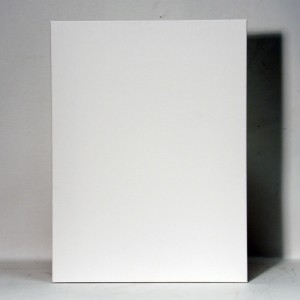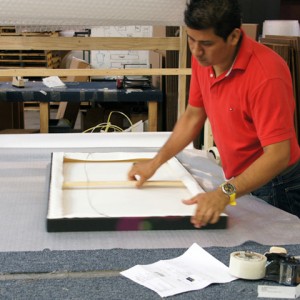Even More Remarkable Canvases of the World
A blank canvas, yet to be touched with an artist’s mark, is a rather unassuming thing. While there’s certainly an aesthetic pleasure to be had in its straight lines, finely woven texture and stark, particular whiteness, a blank canvas is highly unlikely to garner an excessive amount of attention.

However, when that same humble, if beautiful, piece of unadorned fabric-on-stretchers happens to meet with an agent of color and the mind of an artist, it’s suddenly transformed into a different object entirely, and one with infinite possibilities. Some canvases may even be so particularly and uniquely marked that they become remarkable, and those canvases can be very interesting indeed. Today we’re venturing once again into the subject of the world’s most remarkable canvases, this time looking at the world’s smallest and first canvases ever painted. While both instances are difficult to determine exactly, the attempt to do both reveals some very interesting results.
The World’s Smallest Canvas…Competition
In our last remarkable canvas entry we showed you the world’s largest canvas, but this time we’re sliding down to the other end of the spectrum. Unlike the world’s largest, however, there is no recognized “world’s smallest canvas,” but what there is, is perhaps just as interesting. We’re talking about the World’s Smallest Stretched Canvas Competition held by the Hudson Valley Gallery in Cornwall-on-Hudson, a small town in the southern tip of New York state. Founded in 2008, the competition is put on once a year by artist and gallery owner Paul Gould, and it attracts a few hundred entries every time it’s held.
The rules of the competition are simple: each entry must be an oil or acrylic painting on a 1” x 2” canvas and it must be mailed or hand-delivered to the gallery by a set date along with a $10 entry fee. A panel of judges then selects the best of the bunch, and the artist is awarded a $500 prize. Each painting in the competition must be allowed to be for sale by the gallery, who then collects the profits. If you’re interested, take a look at their website and keep an eye out for the next instance of the competition!
The Search for the Earliest Painted Canvas in History
Like the world’s smallest canvas, it’s difficult to pinpoint the earliest painting on canvas, as many have not survived and some are difficult to date. However, unlike the smallest, we do have a few particular instances of canvas use that are good candidates for the world’s oldest surviving canvas painting. One well-known early canvas painting is recognized as the earliest oil painting on canvas, a French painting from 1410 known as Madonna with Angels. However, another canvas painting from twenty years earlier in 1390, interestingly also a Madonna, called The Madonna of Humility by Lippo di Dalmasio is held by The National Gallery in London to be their earliest canvas painting. A 1955 Time magazine article talks about a 13th century canvas painting that is, surprise, also of Madonna, though that particular instance was canvas over panel.

In terms of famous artists, the Italian Renaissance painter Giovanni Bellini was known to use canvas in his works, which were created in the mid to late 15th century. Bellini is well-known for being the teacher of Titian, another famous painter who used canvas a great deal. While canvas didn’t become popular as a medium for painting until the 1400’s, there’s evidence that something like canvas was in use far before that. Ancient Egyptians and Romans painted on a linen fabric plastered over surfaces, especially in funerary objects. Additionally, the use of painted cotton sheets in celebrations is recognizable as far back as the Middle Ages, if not farther, though these sheets were likely not woven in the same manner as traditional canvas.

Though we may never know the exact oldest use of canvas, and though the smallest canvas designation is both difficult to determine and likely to change, it can’t be denied that the search for both is useful as it reveals some absolutely spectacular uses of the material that is now the dominant medium for artistic creation. With technology in the fields of dating and canvas creation advancing every year, and more and more remarkably small or ancient canvases are brought to light, it’s likely that more information on this field will be available in the next few decades. With the search for the smallest and oldest canvases already having revealed such remarkable works, we simply can’t wait to see what comes to light next.